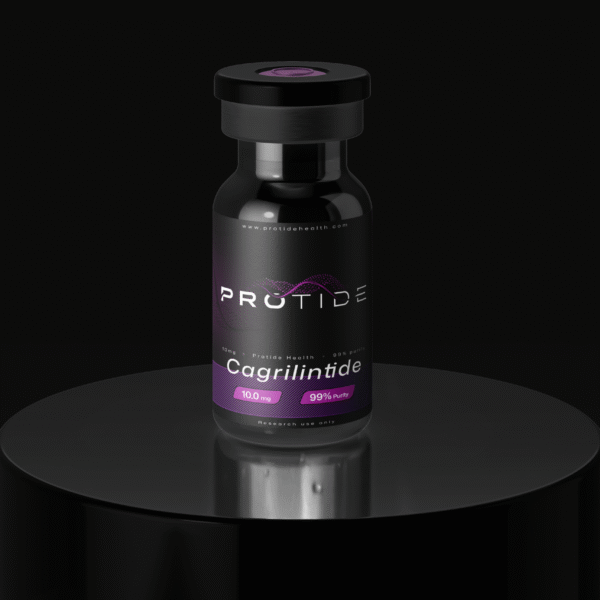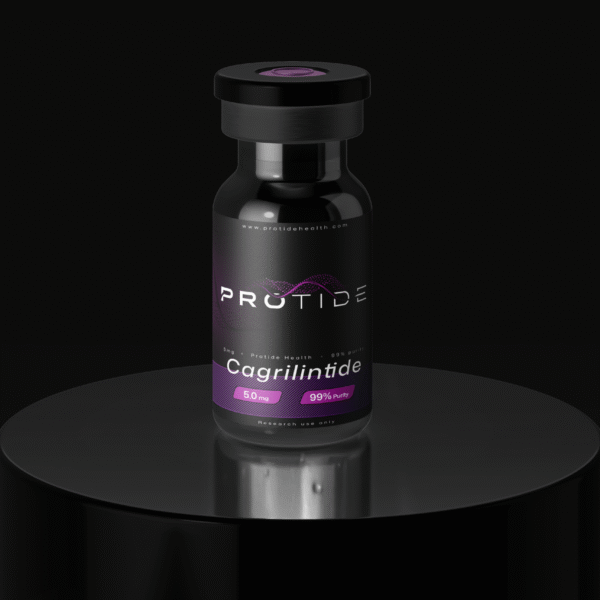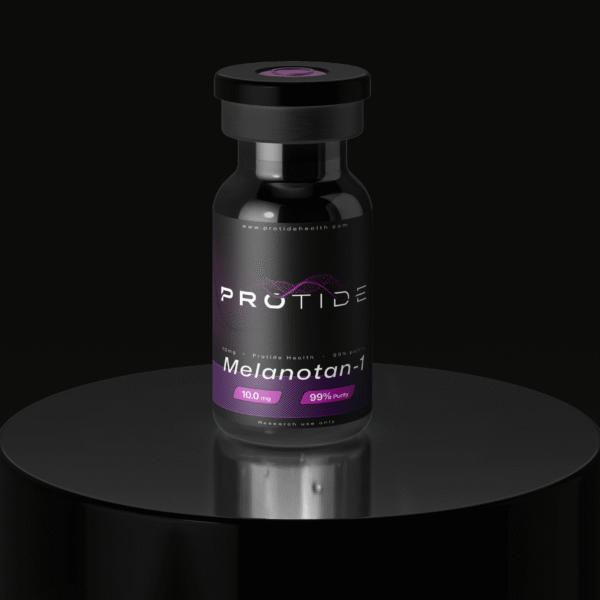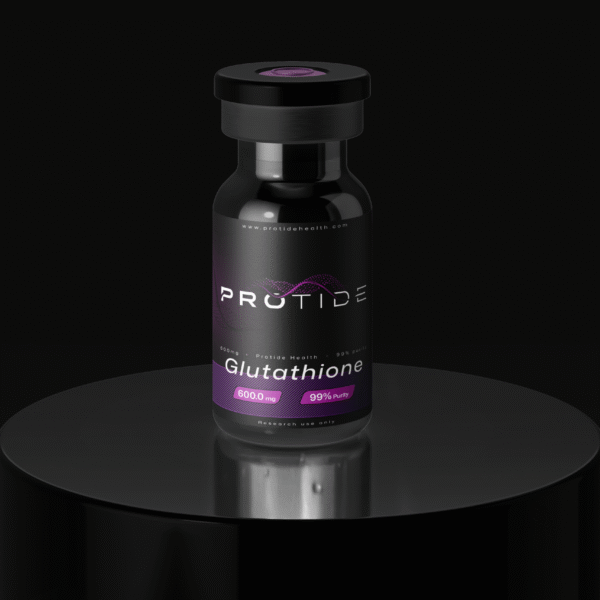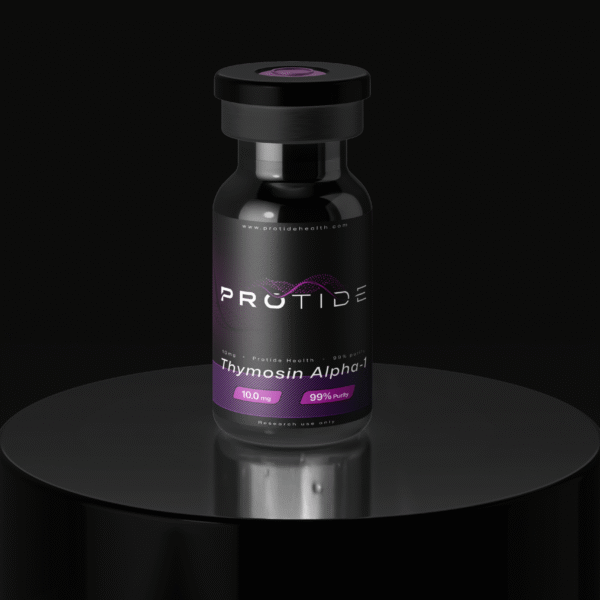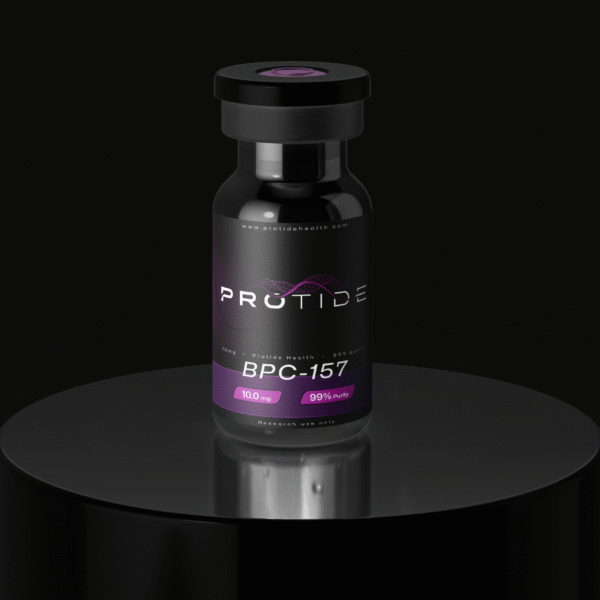
Crystagen 20mg
In controlled studies, EDP/Crystagen has been investigated for normalizing immune profiles in older adults, modulating T-cell markers, and supporting stress resilience, with mechanistic work pointing to direct gene-regulatory and chromatin effects in immune cells.
Description
Crystagen (EDP; Glu–Asp–Pro): An Investigational Thymic Tripeptide for Immune Modulation Research
Overview
Crystagen is the ultrashort tripeptide EDP (Glu–Asp–Pro), identified as one of the biologically active components present in the thymus-derived preparation thymalin and later produced as a defined synthetic sequence. In controlled studies, EDP/Crystagen has been investigated for normalizing immune profiles in older adults, modulating T-cell markers, and supporting stress resilience, with mechanistic work pointing to direct gene-regulatory and chromatin effects in immune cells. Evidence includes observational and controlled data in humans (often in specialized clinical cohorts), animal models of accelerated aging, and in-vitro studies on human immune and epithelial cell lines. While findings are promising for immune homeostasis research, high-quality randomized trials dedicated solely to Crystagen remain limited. PMC
Molecular Identity
Name: Crystagen (trade name); sequence: EDP (Glu–Asp–Pro); class: ultrashort regulatory peptide
Approx. MW: ~359.3 Da
Origin & mapping: The dipeptide KE (vilon) and the tripeptide EDP (Crystagen) were identified as active short peptides associated with thymalin; EDP is studied independently as Crystagen. PMC
Mechanism of Action (Research Context)
Gene-regulatory/epigenetic signaling. Short regulatory peptides—including EDP—can enter cells and nuclei and bind DNA/histone targets, modulating transcription of genes related to heat-shock responses, cytokines, and cell-cycle control. In aged lymphocytes, EDP has been reported to promote heterochromatinization, consistent with a shift in chromatin state during immune aging. Collectively, these mechanisms are used to explain observed changes in immune markers in preclinical and clinical settings. PubMed PMC+1
Immune-cell programs. Across models, EDP/Crystagen and related thymic peptides are reported to influence differentiation, proliferation, and apoptosis of immune cell subsets (e.g., thymocytes, T-helper cells, macrophages) and heat-shock/cytokine gene expression (e.g., HSPA1A, IL-6). PMC
Oral/transport plausibility (ultrashort peptides). Di- and tripeptides can utilize proton-dependent oligopeptide transporters (PEPT1/PEPT2) and, in some cases, LAT1/2 carriers, supporting investigation of oral and tissue uptake pathways for ultrashort sequences like EDP. PMC
Evidence Overview
Human data (selected findings)
Older adults with impaired immunity. In a clinical cohort, oral Crystagen added to standard care was associated with immunogram normalization in 82% of participants vs 56% with standard care alone; changes favored the T-cell compartment (↑CD3+, ↑CD4+, normalization of CD4+/CD8+), alongside reduced asthenic symptoms. (Study details and methods in the cited paper.) PMC
Athlete cohort (stress/infection endpoints). Short-peptide programs including Crystagen were linked to increased stress resistance, up-regulated HSPA1A, normalized IL-6, and a lower incidence of acute respiratory viral infections during observation. Because multiple peptides were used, attribution to EDP alone is not possible. PMC
Animal & ex vivo
Accelerated aging model (γ-irradiation). Crystagen preserved cortex–medulla thymic architecture, increased macrophage/mast-cell presence, and enhanced thymocyte proliferation (PCNA) relative to controls. PMC
In-vitro mechanisms
Selective proliferation effects. EDP/Crystagen stimulated proliferation of normal human lymphocytes but inhibited immortalized/tumor cell lines (e.g., K-562), suggesting context-dependent regulation of cell cycling. PubMed PMC
Macrophage/epithelial actions. EDP increased cytokine secretion (IL-1, IL-6, TNF-α) from murine peritoneal macrophages and activated human thymic epithelial cells (VTEC2.H/S). PMC
What This Could Mean:
Immune balance signals: Studies commonly track T-cell markers (CD3, CD4) and CD4+/CD8+ ratios. Research with Crystagen has reported movement toward age-appropriate ranges, which, if reproduced, would look like a more balanced immunogram over weeks to months in monitored cohorts. PMC
Stress-resilience markers: In settings of high physiological load (e.g., intensive training), programs that included Crystagen observed higher HSP70 (HSPA1A) and normalized IL-6, correlating with fewer respiratory sick-days in follow-up. Such endpoints translate into “feel-able” differences like fewer interruptions to training or work—but require robust controls to confirm causality. PMC
Cellular “quality-control” (mechanistic): If EDP reaches target cells, its nuclear access and DNA/histone binding could explain downstream gene-expression shifts tied to immune function—effects that would not be “felt” immediately but might be detected via omics or qPCR panels in a lab protocol. PubMed PMC
Study Design & Measurement (for Investigators)
Clinical/exploratory designs
Population: Older adults with immune dysregulation; high-load cohorts (e.g., endurance athletes).
Comparators: Matched standard care or vehicle; be explicit about co-peptides if using combinations.
Primary endpoints: Immunogram normalization rate; flow-cytometry panels (CD3, CD4, CD8; naïve/memory phenotypes); illness-day counts; standardized fatigue/asthenia scales.
Mechanistic endpoints: HSPA1A, IL-6 expression; targeted cytokine panels; epigenetic marks (chromatin assays). PMC
Preclinical panels
Immune-cell assays: Proliferation/apoptosis in normal vs immortalized lines; macrophage cytokine secretion; thymic epithelial cell proliferation. PMC
Uptake/transport: PEPT1/PEPT2/LAT engagement models; nuclear localization with fluorescently labeled EDP analogs. PMC PubMed
Formulation & Delivery Notes (Research Context)
EDP’s tripeptide size is compatible with intestinal di-/tripeptide transporters (PEPT1/PEPT2) and, in some cases, LATs, supporting oral-delivery research. Once internalized, nuclear penetration has been demonstrated for several ultrashort peptides, with specific DNA interactions documented in vitro. Formulation work should therefore emphasize stability, bioavailability, and assayable exposure (e.g., surrogate gene signatures) rather than nominal content alone. PMCPubMed
Safety, Tolerability & Realistic Expectations
Published human work with thymic peptides (and cohorts including Crystagen) generally reports good tolerability; however, dedicated, modern RCTs isolating Crystagen are sparse, and much of the literature comes from a small number of research groups. Investigators should plan for modest effect sizes, prioritize objective immune readouts, and treat multi-peptide protocols as hypothesis-generating rather than confirmatory. PMC
Limitations & Open Questions
Attribution: Several positive human observations used multi-peptide regimens; single-agent effect sizes for Crystagen need rigorous confirmation. PMC
Generality: Many studies originate from a limited set of institutions; independent replication and diverse populations are needed. PMC
Dose–response/durability: Optimal concentration, duration, and maintenance strategies remain to be established with contemporary trial methods. PMC
Conclusion
Crystagen (EDP; Glu–Asp–Pro) is a defined thymic tripeptide with a coherent mechanistic rationale (nuclear entry, DNA/histone engagement, immune-gene regulation) and supportive human, animal, and cell data pointing to immune profile normalization and stress-response modulation in research settings. For individual-level readouts, the most concrete signals to track are T-cell markers, immunogram normalization rates, illness-day counts, and HSPA1A/IL-6 shifts—while acknowledging that larger, controlled, single-agent trials are required to quantify effect sizes and generalize findings. PMC+1
Key Citations (medical/research sources)
Mapping & human outcomes: The Use of Thymalin for Immunocorrection and Molecular Aspects of Biological Activity—identifies EDP as Crystagen, reports immunogram normalization (82% vs 56% control), T-cell shifts, athlete cohort infection/stress data, and thymic preservation in irradiated rats. PMC
Cell entry & DNA interaction: Fedoreyeva et al., Biochemistry (Moscow)—short peptides penetrate nuclei and bind DNA/RNA (fluorescent peptide studies). PubMed
Ultrashort-peptide transport: Khavinson et al., Int J Mol Sci—review of PEPT1/2 and LAT1/2 carriers for di-/tripeptide transport; rationale for oral uptake and tissue specificity. PMC
Selective proliferation effects: Khavinson et al., Bull Exp Biol Med—EDP inhibits immortalized/tumor cell proliferation and stimulates normal lymphocyte proliferation (context-dependent). PubMed
Mechanistic & immune-cell context: Caputi et al., Ther Adv Chronic Dis—reviewing short peptides; summarizes EDP effects on lymphocytes and K-562 cells and broader peptide-driven differentiation programs. PMC
Peptide regulation of gene expression (overview): Khavinson et al., Molecules—systematic review of short-peptide gene regulation across systems. PMC
Legal Disclaimer
This article is provided for research and educational purposes only. Crystagen (EDP; Glu–Asp–Pro) is not approved by the U.S. Food and Drug Administration (FDA) or other regulatory authorities for the diagnosis, treatment, cure, or prevention of any disease. Any investigation should occur exclusively within controlled research settings, in compliance with applicable laws, institutional review, and good clinical/laboratory practice.
Additional information
| Weight | 1 lbs |
|---|---|
| Dimensions | 1 × 1 × 1 in |

